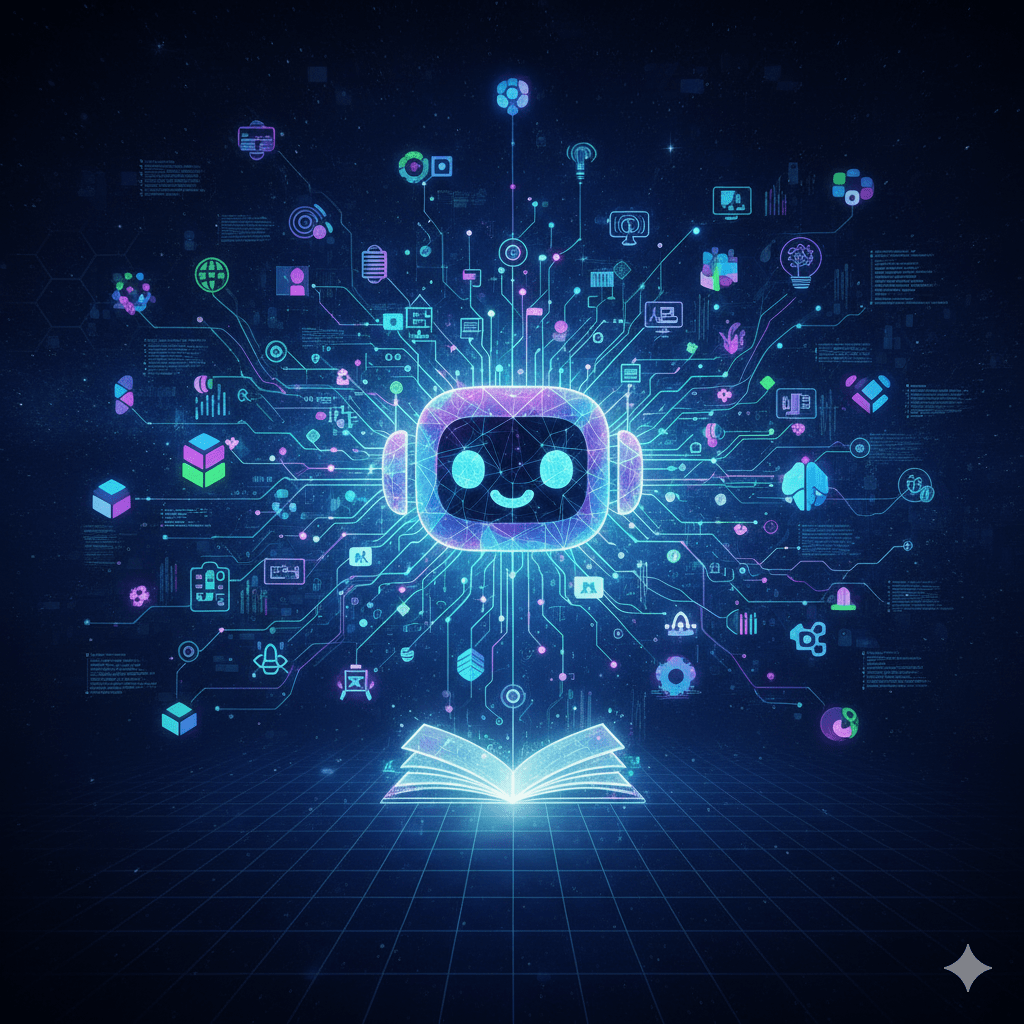
What is Hugging Face? The Definitive Guide to the Open Source AI Platform
Hugging Face is the world’s leading open source artificial intelligence platform that democratizes access to machine learning models. With over 500,000 models and 100,000 datasets, it’s the “GitHub of AI” where developers and organizations share, deploy, and use state-of-the-art models.
Founded in 2016, Hugging Face has evolved from a chatbot startup to become the essential infrastructure for modern AI development, with a community of over 5 million users.
What is Hugging Face?
Hugging Face is a comprehensive platform that combines:
- 🤗 Model Hub: Massive repository of pre-trained models
- 📚 Specialized Libraries: Transformers, Datasets, Accelerate, and more
- ☁️ Interactive Spaces: Deployable ML demos and applications
- 🚀 Inference API: Scalable inference services
- 🏢 Enterprise Solutions: Tools for teams and organizations
The Hugging Face Ecosystem
1. Hugging Face Hub
- 500,000+ models: From BERT to LLaMA, Stable Diffusion, and more
- 100,000+ datasets: Curated data for training and evaluation
- Version control: Git LFS for large models
- Collaboration: Forks, pull requests, and discussions
2. Transformers Library
The most popular library for working with transformer models:
from transformers import pipeline
# Sentiment analysis
classifier = pipeline("sentiment-analysis")
result = classifier("I love Hugging Face!")
# [{'label': 'POSITIVE', 'score': 0.9998}]
3. Spaces
Interactive web applications to demonstrate models:
- Gradio: Quick and simple interfaces
- Streamlit: Complex data applications
- Docker: Custom deployments
Popular Models on Hugging Face
🎯 Natural Language Processing
- BERT: Bidirectional Encoder Representations from Transformers
- GPT-2/GPT-J: Generative text models
- T5: Text-to-Text Transfer Transformer
- RoBERTa: Optimized version of BERT
- DistilBERT: Compact and fast version of BERT
🎨 Image Generation
- Stable Diffusion: Text-to-image generation
- DALL-E Mini: Open source version of DALL-E
- ControlNet: Precise control in image generation
🗣️ Audio and Speech
- Whisper: Automatic speech recognition
- Wav2Vec2: Audio representations
- SpeechT5: Multilingual speech synthesis
👁️ Computer Vision
- YOLO: Real-time object detection
- ViT: Vision Transformer
- DETR: End-to-end detection and segmentation
Main Use Cases
🏢 For Businesses
- Sentiment analysis: Social media and feedback monitoring
- Intelligent chatbots: Automated customer service
- Machine translation: Multilingual communication
- Document classification: Automatic content organization
- Text summarization: Processing long reports
👨💻 For Developers
- Rapid prototyping: Testing ideas with pre-trained models
- Fine-tuning: Customizing models for specific cases
- Research: Experimenting with advanced architectures
- Deployment: Production-ready APIs
🎓 For Education and Research
- Learning: Interactive tutorials and notebooks
- Benchmarking: Model evaluation and comparison
- Reproducibility: Shared code and models
- Collaboration: Open research projects
Advantages of Hugging Face
✅ Strengths
Unprecedented Accessibility
- Free and open source: Free access to state-of-the-art models
- Excellent documentation: Detailed guides and examples
- Active community: Constant support and collaboration
Ease of Use
- Unified APIs: Same interface for different models
- Simple installation:
pip install transformers - Perfect integration: Compatible with PyTorch, TensorFlow, and JAX
Impressive Variety
- Multiple modalities: Text, image, audio, video
- All languages: Extensive multilingual support
- Specialized tasks: From classification to generation
Robust Infrastructure
- Scalability: From experiments to production
- Optimization: Accelerated and compressed models
- Monitoring: Detailed metrics and logs
⚠️ Challenges and Considerations
Learning Curve
- Initial complexity: ML concepts necessary
- Model selection: Choosing the right model can be overwhelming
- Advanced configuration: Optimizations require experience
Computational Resources
- Large models: Require powerful GPUs
- Inference costs: Can be significant in production
- Storage: Models occupy gigabytes of space
Ethical Considerations
- Model biases: Inheritance of biases in training data
- Responsible use: Need for validation and supervision
- Privacy: Care with sensitive data
Getting Started with Hugging Face
1. Basic Installation
pip install transformers torch torchvision torchaudio
2. First Model
from transformers import pipeline
# Text classification
classifier = pipeline("text-classification",
model="nlptown/bert-base-multilingual-uncased-sentiment")
result = classifier("This product is amazing")
3. Explore the Hub
- Visit huggingface.co/models
- Filter by task, language, or modality
- Try models directly in the browser
4. Create Your First Space
- Upload your demo application
- Share with the community
- Iterate based on feedback
The Future of Hugging Face
Current Trends
- Multimodal models: Text-image-audio integration
- Efficiency: Smaller and faster models
- Specialization: Domain-specific models
- Democratization: AI accessible to everyone
Industry Impact
Hugging Face is redefining how we develop AI:
- Barrier reduction: From months to minutes to implement AI
- Open collaboration: Research acceleration
- De facto standards: Industry-defining APIs
- Distributed innovation: Thousands of global contributors
Conclusion
Hugging Face represents the democratization of artificial intelligence, transforming a technology that was once limited to large corporations into tools accessible to any developer or researcher.
Its focus on open collaboration, ease of use, and technical excellence makes it the essential platform for any modern AI project. Whether you’re starting your machine learning journey or are an expert looking for the latest advances, Hugging Face offers the tools and community needed to take your ideas to the next level.
Ready to explore the world of open source AI? Start your journey at huggingface.co and join the revolution that’s democratizing artificial intelligence.